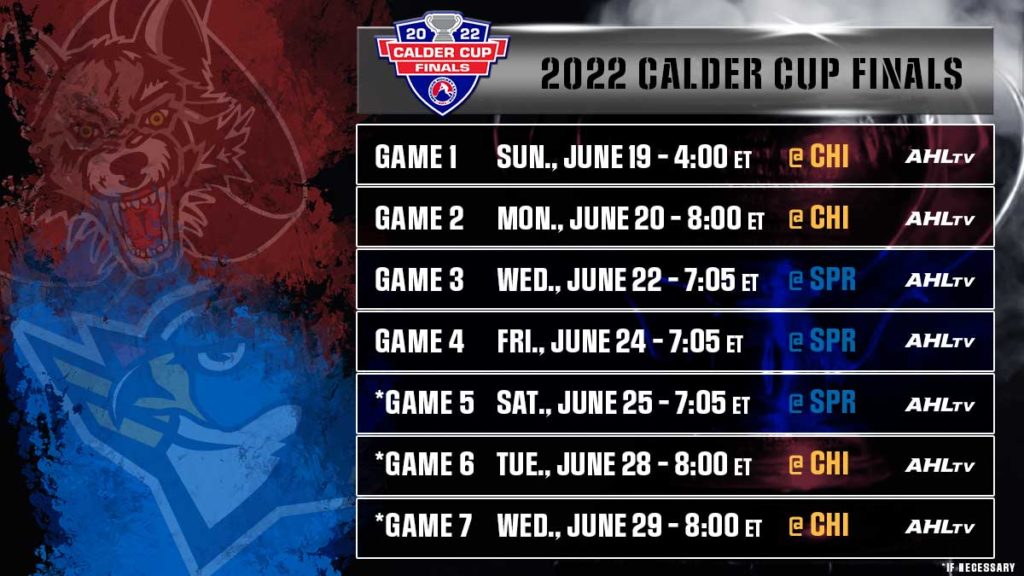 Sam Anas heard the whispers that grew increasingly louder as the Eastern Conference Finals against Laval progressed.
Sam Anas heard the whispers that grew increasingly louder as the Eastern Conference Finals against Laval progressed.
The American Hockey League’s hottest player had gone uncharacteristically cold. In Springfield’s first two playoff rounds, Anas had broken out with 13 points (four goals, nine assists) in six games, including four consecutive multi-point efforts.
Then the production stopped ― abruptly. Anas endured seven point-less games, and Springfield felt the pressure of a production shutdown from perhaps the biggest key in the team’s offense. Anas, whose 64 points (20 goals, 44 assists) in 75 regular-season games led the team, had not gone more than five games during the regular season without a point, and that drought came during a punishing run of five games in seven nights back in April.
At the worst possible time, Anas could not get the bounces and puck luck that any good scorer needs, especially when facing a hot goaltender like Laval’s Cayden Primeau.
Anas finally did break through in Game 7 on Wednesday, picking up an assist on a second-period power-play goal by Nathan Todd. It speaks to the early-round production for Anas that he still is averaging better than a point per game this postseason.
A sixth-year pro who won the John B. Sollenberger Trophy in 2019-20 as the AHL’s leading scorer with 70 points (20 goals, 50 assists) in 63 games, Anas had enough accumulated confidence to weather this slump.
“I think it’s one of those things that for me, at least, when I’m not producing points-wise, I’m more frustrated if I’m not getting any chances,” Anas said following practice yesterday. “And I felt like throughout that whole series, I was still getting chances or just hitting posts or Primeau making these saves.
“To me, it’s more frustrating when I feel like I’m not involved, and I’m not getting chances at all. So yes, it was frustrating to not produce or score or anything like that. But just the fact that I was in the mix every game is really what helped me get through it.”
That others, notably the Mackenzie MacEachern–Dakota Joshua–Will Bitten line, more than picked up Springfield’s scoring burden helped as well. So did advancing to the Calder Cup Finals and a chance to start fresh in this series.
“When you’re winning every other game, and when you win the series, all of a sudden you really don’t care at all [about a slump],” Anas continued.
“We’re moving on, and we’re happy.”

One unknown the Wolves may face against Springfield is the battle on special teams.
Against offensively dangerous Stockton in the six-game Western Conference Finals, the Wolves burned off 27 of 28 Stockton power-play opportunities. Through 13 playoff games, the Chicago penalty kill is 51-for-59 (86.4 percent).
“It’s just guys buying in,” Wolves defenseman Cavan Fitzgerald told reporters. “Blocking shots, getting the puck 200 feet.”
Now Chicago will be facing a Springfield power play that has been both a boost and a challenge for the Thunderbirds this postseason. Springfield sizzled on the man-advantage in the opening two rounds against Wilkes-Barre/Scranton and Charlotte, converting at a 37.9 percent rate (11-for-29). Against Laval, however, the Thunderbirds suffered a 0-for-29 power-play slump in the first six games before clicking twice on three chances in a 4-0 Game 7 victory.
Springfield’s penalty kill is operating at 85.7 percent (36-for-42) this postseason. The Thunderbirds will be tasked with stopping, or at least slowing, a Chicago power play with multiple looks and weapons. The Wolves are clicking at 25.9 percent (14-for-54).
“Special teams runs the playoffs,” Fitzgerald said.
― Patrick Williams



